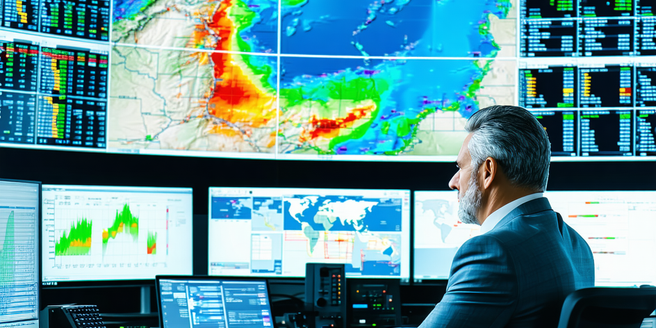
Understanding Human Cognition in Meteorology
Meteorology relies heavily on human cognition, as forecasters analyze complex patterns and variables. Human cognition in weather prediction involves the ability to process vast amounts of data and recognize subtle patterns that machines might overlook. It is fascinating how these cognitive processes often outperform advanced computational models in real-world scenarios. Cognitive skills such as attention to detail, pattern recognition, and memory play a role in interpreting meteorological data. Despite technological advancements, human intuition remains vital for non-linear and unexpected weather events. Ultimately, human cognition enriches meteorological analysis by allowing for more nuanced interpretations and adaptive decision-making.
The Role of Experience in Forecasting
Experience is crucial in weather forecasting, enabling forecasters to discern subtle atmospheric cues that signal changing conditions. Understanding the intricacies of meteorological patterns requires years of practice and observation. Experienced forecasters leverage their knowledge and past exposure to recognize patterns and inconsistencies that younger professionals may overlook. This expertise helps forecasters make more informed predictions by drawing on historical data. Furthermore, experiential knowledge often aids in mitigating uncertainties and refining prediction accuracy. As experience accumulates, forecasters develop a more refined intuition that aids in understanding complex meteorological phenomena, ultimately contributing to more reliable weather forecasts.
Challenges Faced by Human Forecasters
Human forecasters confront numerous challenges, from rapidly changing weather conditions to the sheer volume of data to analyze. One significant hurdle is managing information overload while ensuring accurate interpretations. Additionally, biases can affect decision-making and lead to overconfidence in certain forecast models. As technology advances, forecasters must adapt to new tools and methods to stay ahead. These challenges necessitate continuous training and the incorporation of new techniques to sharpen analytical skills. The inherent unpredictability of weather also introduces uncertainty, making the preparation of forecasts under such constraints daunting. To overcome these obstacles, forecasters must combine scientific knowledge with refined judgement.
Human Versus Machine Predictions in Weather
The distinction between human and machine weather predictions lies in the blend of intuition and computational power. While machines excel at processing vast datasets quickly, human forecasters provide contextual understanding and interpretative insight. Machines generate models based on algorithms but may miss the nuanced interpretation that humans bring. The unpredictability of certain weather patterns requires the judgment and adaptability that humans offer. The combination of human expertise and machine precision is often most effective. Human forecasters can adjust machine-generated predictions based on their experience and situational awareness, leading to improved forecast accuracy and reliability by complementing each other’s strengths.
Improving Human Accuracy in Predictions
Improving human accuracy in weather forecasts involves integrating enhanced training, collaboration, and technology. Continuous learning and professional development programs help forecasters remain updated with the latest meteorological research and methodologies. Collaboration with machine learning systems also holds promise as forecasters calibrate predictions and identify areas for improvement. With climate patterns becoming more unpredictable, there is an ever-growing need for accurate and timely weather information. Utilizing advanced tools while refining cognitive and analytical skills can optimize forecasts. By embracing innovative approaches and encouraging interdisciplinary collaboration, human forecasters can enhance their precision, leading to more reliable weather predictions that benefit societies at large.
Future Trends in Human-Aided Weather Forecasting
The future of human-aided weather forecasting is likely to involve greater integration of artificial intelligence and machine learning. These technologies will complement human intuition by providing more precise analytical capabilities. Forecasters will harness these tools to refine predictions and enhance their understanding of complex atmospheric processes. This evolution will require ongoing training and adaptation from human forecasters to fully leverage new technologies. Collaborations across interdisciplinary fields, such as cognitive science and meteorology, will foster innovative methods and tools for more accurate forecasts. As technology evolves, the role of human judgement will remain crucial, blending the best of human insight with advancements in automated processes.
